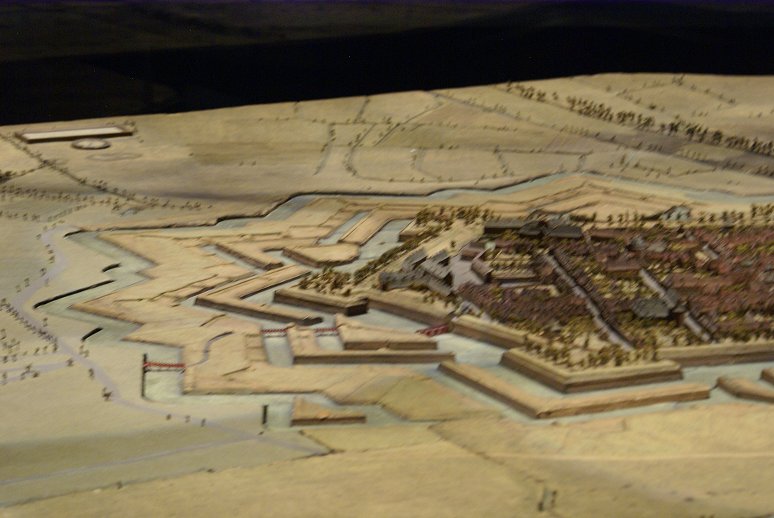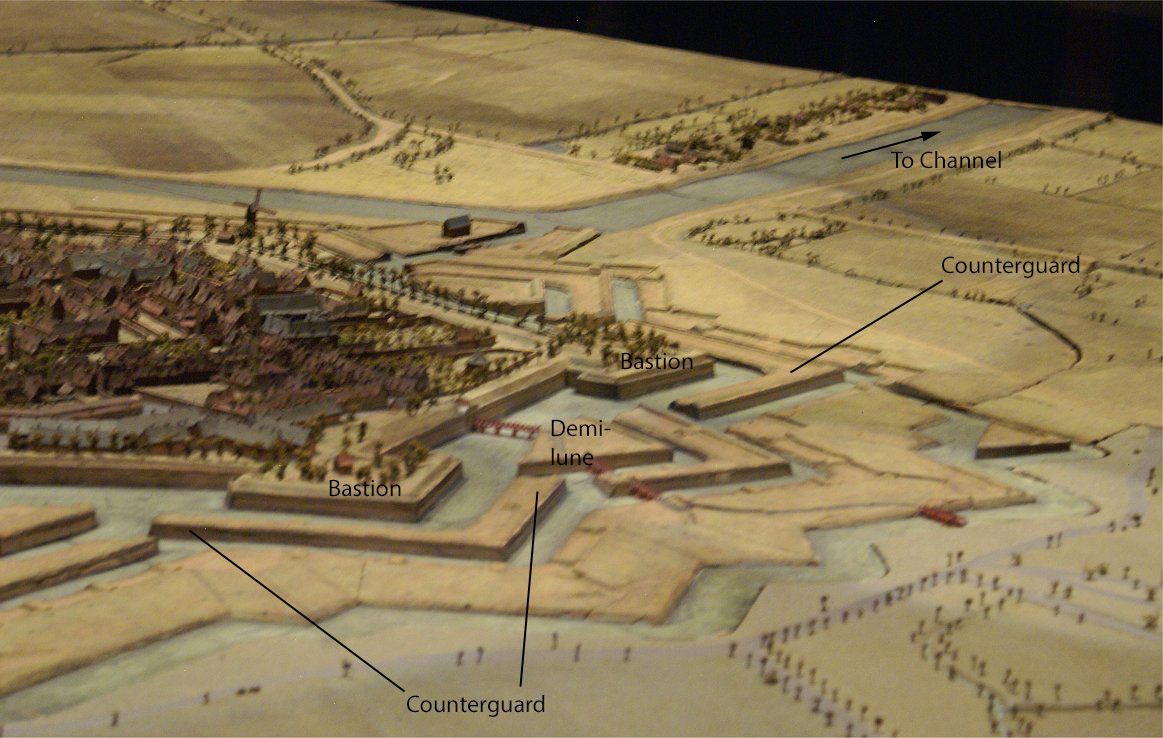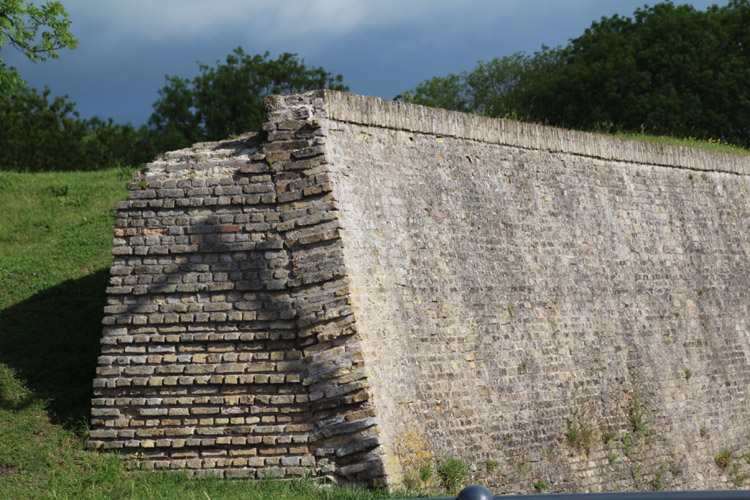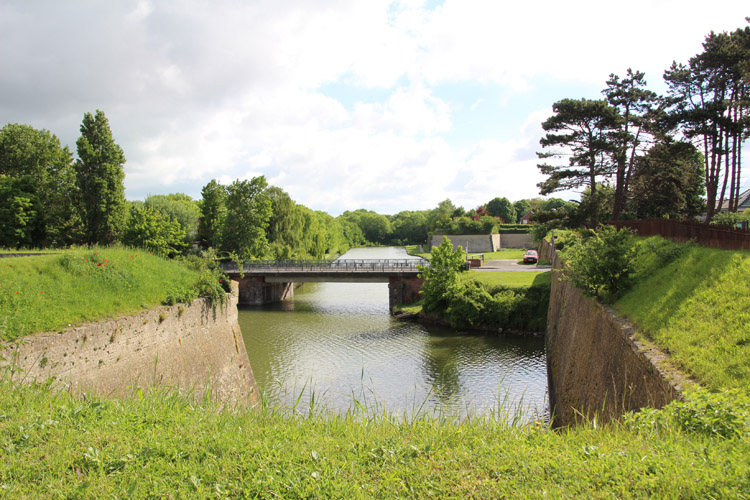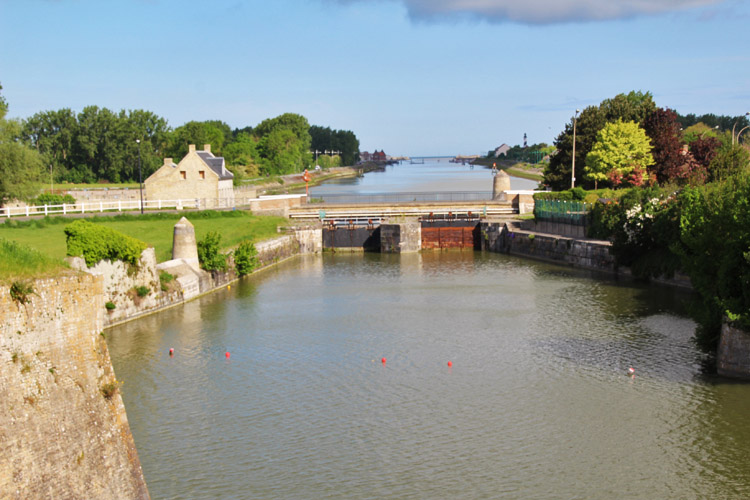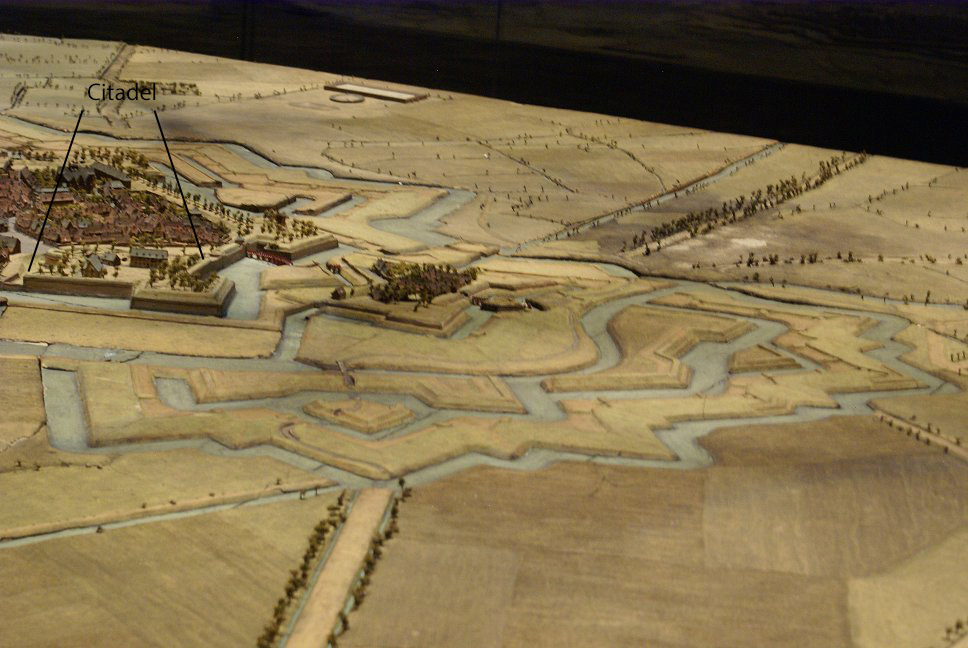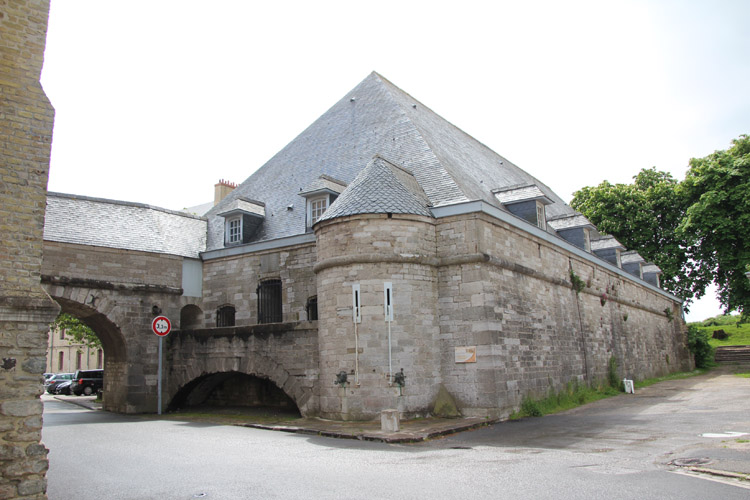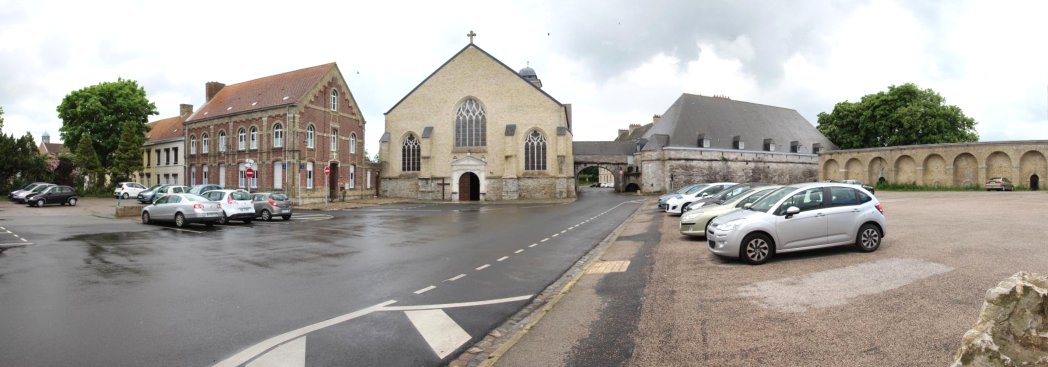The cistern has two levels, the attic and the cistern proper that are accessed by an external staircase and gallery. The vaulted cistern holds water brought by the aqueducts from the rooves of the neighboring church and Barracks Varennes - then filtered before storeage.
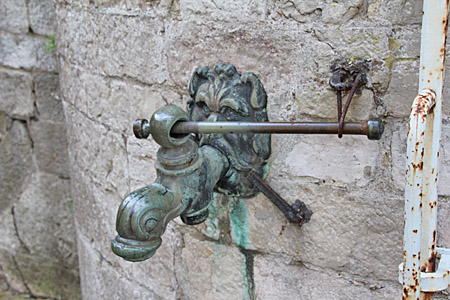
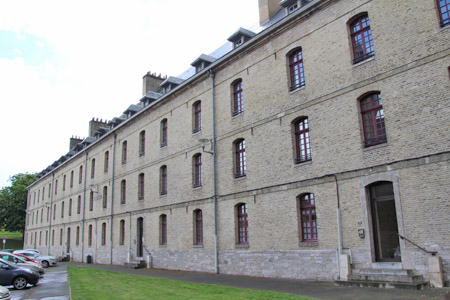
Varennes Barracks -date to 1737, could house 600 men.
